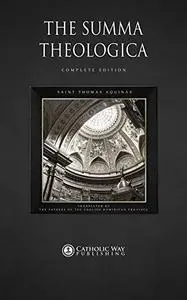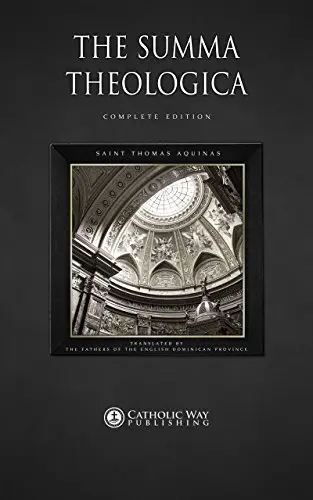Saint Thomas Aquinas, Catholic Way Publishing, The Fathers of the English Dominican Province, "The Summa Theologica: Complete Edition"
English | 2014 | ASIN: B00LW9IBNG | 9303 pages | EPUB | 9.88 MB
English | 2014 | ASIN: B00LW9IBNG | 9303 pages | EPUB | 9.88 MB
THE SUMMA THEOLOGICA: COMPLETE EDITION
SAINT THOMAS AQUINAS
— A Classic in Western Philosophy and the Catholic Church
— Complete and Unabridged, contains the Complete Text and Supplements
— Three Parts, 38 Tracts, 631 Questions, 3,000 Articles, 10,000 Objections and Answers
— Over 2.5 Million words
— Includes an Active Index and multiple Table of Contents to every Part, Question and Article
— Includes Layered NCX Navigation
— Includes Illustrations by Gustave Dore
The Summa Theologica, or 'Summary of Theology' was written from 1265 to 1274. It is the greatest achievement of Saint Thomas Aquinas and one of the most influential works of Western literature and Philosophy. His influence on Western thought is considerable, and much of modern Philosophy was conceived as a reaction against, or as an agreement with, his ideas, particularly in the areas of Ethics, Natural Law, Metaphysics, and Political Theory.
It is intended as a manual for beginners in Theology and a Compendium of all of the main Theological teachings of the Roman Catholic Church. It presents the reasoning for almost all points of Christian Theology in the West. The book is famous, among other things, for its five arguments for the existence of God, the Quinque viae.
The Summa Theologica's topics follow a cycle: The Existence of God; Creation, Man; Man's Purpose; Christ; The Sacraments; and back to God.
The first part is on God. In it, he gives five proofs for God’s existence as well as an explication of His attributes. He argues for the actuality and incorporeality of God as the unmoved mover and describes how God moves through His thinking and willing.
The second part is on Ethics. Thomas argues for a variation of the Aristotelian Virtue Ethics. However, unlike Aristotle, he argues for a connection between the virtuous man and God by explaining how the virtuous act is one towards the blessedness of the Beatific Vision (beata visio).
The last part of the Summa is on Christ and was unfinished when Thomas died. In it, he shows how Christ not only offers salvation, but represents and protects humanity on Earth and in Heaven. This part also briefly discusses the sacraments and eschatology. The Summa remains the most influential of Thomas’s works.
Saint Thomas Aquinas was a Dominican Priest, born near Aquino, Sicily in 1225. He was an immensely influential Philosopher and Theologian in the tradition of Scholasticism, known as Doctor Angelicus. He died in 1274. As one of the 33 Doctors of the Church, he is considered the Church's greatest Theologian and Philosopher. Thomas is held in the Catholic Church to be the model teacher for those studying for the priesthood. He was canonized in 1323.



